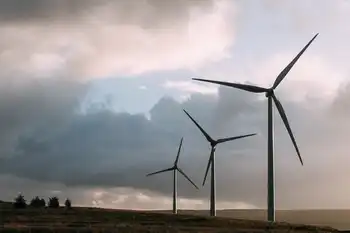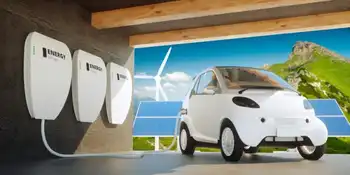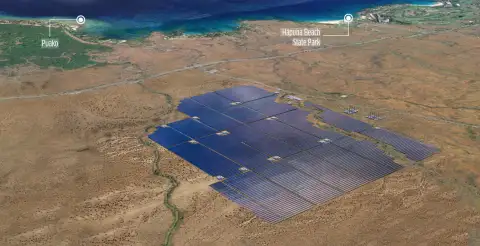Invenergy and GE Renewable Energy complete largest wind project constructed in North America

Substation Relay Protection Training
Our customized live online or in‑person group training can be delivered to your staff at your location.

- Live Online
- 12 hours Instructor-led
- Group Training Available
North Central Energy Facilities deliver 1,484 MW of renewable power in Oklahoma, uniting Invenergy, GE Renewable Energy, and AEP with the Traverse, Maverick, and Sundance wind farms, 531 turbines, grid-scale clean energy, and regional decarbonization.
Key Points
A 1,484 MW trio of Oklahoma wind farms by Invenergy with GE turbines, owned by AEP to supply regional customers.
✅ 1,484 MW capacity from 531 GE 2 MW platform turbines
✅ Largest single-phase wind farm: 998 MW Traverse
✅ Owned by AEP subsidiaries SWEPCO and PSO
Invenergy, the largest privately held global developer, owner and operator of sustainable energy solutions and GE Renewable Energy, today announced commercial operations for the 998-megawatt Traverse Wind Energy Center, the largest wind farm constructed in a single phase in North America, reflecting broader growth such as Enel's 450 MW project announced recently.
Located in north central Oklahoma, Traverse joins the operational 199-megawatt Sundance Wind Energy Center and the 287-megawatt Maverick Wind Energy Center, as the last of three projects developed by Invenergy for American Electric Power (AEP) to reach commercial operation, amid investor activity like WEC Energy's Illinois stake in wind assets this year. These projects make up the North Central Energy Facilities and have 531 GE turbines with a combined capacity of 1,484 megawatts, making them collectively among the largest wind energy facilities globally, even as new capacity comes online such as TransAlta's 119 MW addition in the US.
"This is a moment that Invenergy and our valued partners at AEP, GE Renewable Energy, and the gracious members of our home communities in Oklahoma have been looking forward to," said Jim Shield, Senior Executive Vice President and Development Business Leader at Invenergy, reflecting broader momentum as projects like Building Energy project begin operations nationwide. "With the completion of Traverse and with it the North Central Energy Facilities, we're proud to further our commitment to responsible, clean energy development and to advance our mission to build a sustainable world."
The North Central Energy Facilities represent a $2 billion capital investment in north central Oklahoma, mirroring Iowa wind investments that spur growth, directly investing in the local economy through new tax revenues and lease payments to participating landowners and will generate enough electricity to power 440,000 American homes.
"GE was honored to work with Invenergy on this milestone wind project, continuing our long-standing partnership," said Steve Swift, Global Commercial Leader for GE's Onshore Wind business, a view reinforced by projects like North Carolina's first wind farm coming online. "Wind power is a key element of driving decarbonization, and a dependable and affordable energy option here in the US and around the world. GE's 2 MW platform turbines are ideally suited to bring reliable and sustainable renewable energy to the region for many years to come."
AEP's subsidiaries Southwestern Electric Power Company (SWEPCO) and Public Service Company of Oklahoma (PSO) assumed ownership of the three wind farms upon start of commercial operations, alongside emerging interstate delivery efforts like Wyoming-to-California wind plans, to serve their customers in Arkansas, Louisiana and Oklahoma.











